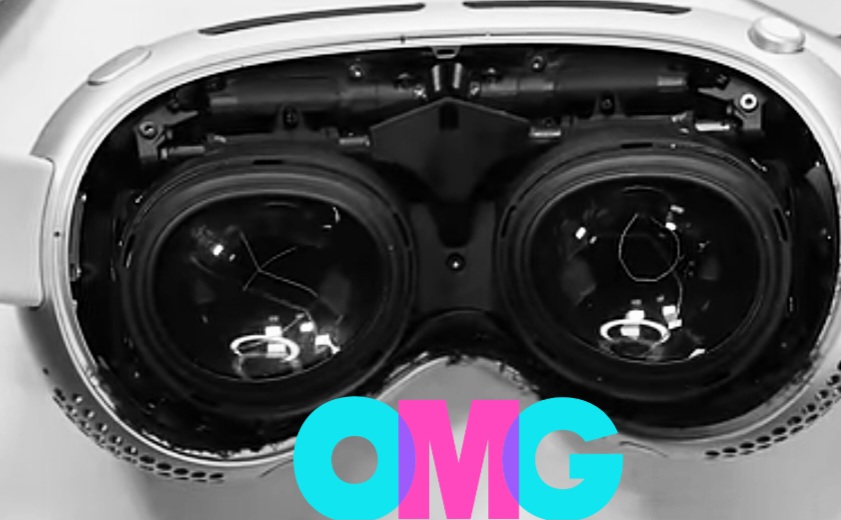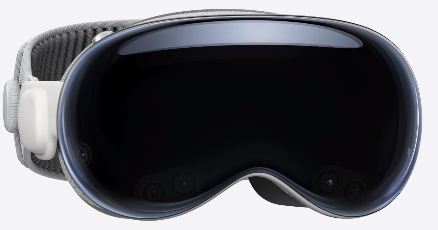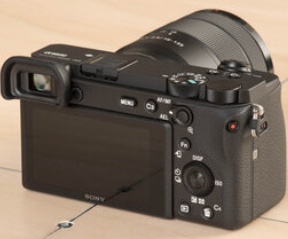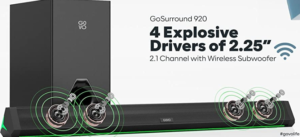The R1 and M2 dual chips in the Apple Vision Pro make this computer truly remarkable. However, repairing the Apple Vision Pro can be challenging due to the numerous T5 and T4 screws placed throughout the device. These screws, arranged in staggered rows, secure the lens mechanism, which may obstruct access to the internal components, including the dual or triple fans similar to those found in MacBook models. Despite the complexity of the design, the automatic lens movement feature, capable of measuring interpupillary distances between 51 to 75 millimeters, adds to the device’s functionality. Furthermore, each screw used in the Vision Pro is unique, with a total of five different types of screws utilized in the computer. According to Apple, the Vision Pro boasts an impressive 23 million micro-overly deep pixels, contributing to its exceptional display quality.

Apple Vision Pro Review
Understanding R1 and M2 Chips
All these questions about two 32-millimeter wide and 27-millimeter tall chips evoke an otherworldly experience. The meticulous arrangement of cameras and sensors perfectly Complement the R1 chip, enhancing the overall functionality of the device. The dual M2 and R1 chipboards are securely attached with metal plates, ensuring efficient cooling facilitated by the cool fans dedicated to regulating the temperature of both chips. This harmonious integration of cutting-edge technology and precise engineering results in a device that transcends conventional boundaries, offering users a truly unmatched experience that is unlike anything else.

Explanation of R1 chip
The R1 chip is a remarkable piece of technology that revolutionizes the way we interact with our surroundings through devices like the Apple Vision Pro. It takes charge of processing inputs from various sources such as cameras, microphones, and sensors, seamlessly integrating them to provide users with a nearly lag-free, real-time view of the world around them. With an incredible processing speed of just 12 milliseconds, the R1 chip ensures that users experience minimal delays, allowing for a smooth and immersive AR/VR experience.
Explanation of M2 chip
The M2 chip by Apple represents a significant advancement in computing technology, surpassing its predecessor, the M1, in both performance and efficiency. With its improved CPU, GPU, and Neural Engine, it ensures smoother operations and enhanced handling of demanding tasks, making it highly appealing to both professionals and enthusiasts. The various tiers of the M2 chip are tailored to meet diverse user needs, ranging from everyday users to those engaged in intensive tasks like video editing and 3D modeling. As an individual who values performance and efficiency in my devices, the M2 chip offers an attractive combination of power and reliability. Its compatibility with high-resolution displays, external storage options, and advanced security features further solidify its standing as a leading player in the realm of silicon technology.

Optic ID, Electromagnetic Spectrum In Apple Vision Pro Computers
Advantages of R1 and M2 Chips
The seamless integration of R1 and M2 chips within the Apple Vision Pro has revolutionized the VR experience, offering unparalleled immersion. Their combined power ensures a smooth XR journey, allowing me to explore virtual worlds effortlessly. What’s truly captivating is how each chip optimizes performance, ensuring efficient resource allocation for maximum efficiency. This synergy not only enhances the current VR landscape but also opens up exciting possibilities for future applications. When deciding between the R1 and M2, I carefully consider my specific needs. If I prioritize Vision Pro development or experience, the specialized features of the R1 chip stand out. However, if I require a versatile CPU for tasks beyond the Apple Vision Pro, the M2 chip’s broader capabilities are appealing. Ultimately, in devices like the Apple Vision Pro, the collaboration between these chips creates a powerful and optimized platform for delving into the realms of mixed reality.
Disadvantages of R1 and M2 Chips
In July 2022, Apple unveiled the next generation of MacBook Air and MacBook Pro, featuring a new 5nm chip specifically designed for Mac devices. This chip, succeeding the M1 introduced in November 2020, is a significant upgrade, seemingly based on the A15 Bionic chip. Similar to its predecessor, the M2 chip boasts 4 high-performance cores and 4 high-efficiency cores, promising enhanced performance and efficiency. With this advanced silicon design, users can expect improved processing power and energy efficiency, setting a new standard for vision pro performance in the ever-evolving landscape of technology.
Future Developments
As I look to the future, I’m filled with excitement about the potential of R1 and M2 chip technology. It’s incredible to think about the ongoing progress in microchip design and manufacturing, and how it will continue to elevate the performance of Vision Pro devices. With each advancement, we can anticipate improvements in energy efficiency and processing capabilities, paving the way for even more innovative features and functionalities. The next generation of R1 and M2 chips is poised to redefine what’s possible in the world of technology, and I can’t wait to see how these developments unfold.
difference between R1 chip and M2 chip?
When we delve into the realm of Apple’s chip technology, the distinctions between the R1, M1, and M2 become clear. While the M1 and M2 chips serve as versatile workhorses tailored for Mac systems, the R1 chip takes on a more specialized role, primed specifically to enhance augmented reality encounters. Unlike its broader counterparts, the R1’s laser-like focus on AR tasks enables it to operate with lightning speed, facilitating seamless experiences devoid of lag. This specialized approach not only sets the R1 apart but also highlights its pivotal role in delivering immersive AR adventures unmatched by the M1 and M2.
Conclusion
the Apple Vision Pro stands as a revolutionary marvel, driven by the dynamic synergy of the R1 and M2 chips. This formidable combination catapults users into an unparalleled augmented reality odyssey, harnessing their collective processing prowess and efficiency to redefine immersive experiences. Despite its opaque design, the device serves as a beacon of innovation, boasting cutting-edge functionalities like real-time 3D mapping and spatial FaceTime, elevating immersion to unprecedented heights. With ongoing advancements in microchip engineering, the Vision Pro remains primed to lead the charge in vision pro evolution, continuously reshaping our digital landscape and setting fresh benchmarks for immersive technology.
Are R1 and M2 chips compatible with older apple computers models?
Yes, in most cases, R1 and M2 chips are backward compatible with older apple computer models, although some hardware upgrades may be necessary.
Can R1 and M2 chips be upgraded or replaced?
While upgrading or replacing microchips in Vision Pro devices is technically possible, it may void warranties and require professional installation.
What is the difference between R1 chip and M2 chip?
the distinctions between the R1, M1, and M2 become clear. While the M1 and M2 chips serve as versatile workhorses tailored for Mac systems, the R1 chip takes on a more specialized role, primed specifically to enhance augmented reality (AR) encounters.





[…] have more features that make it awesome powerful device with this dual chip support device. The Apple M2, which is the top VR chip, powers the Vision OS system, visual algorithms, and superior graphics, […]
[…] Apple Vision Pro is a remarkable mixed reality headset that offers a multitude of benefits. you may Happy to hear […]